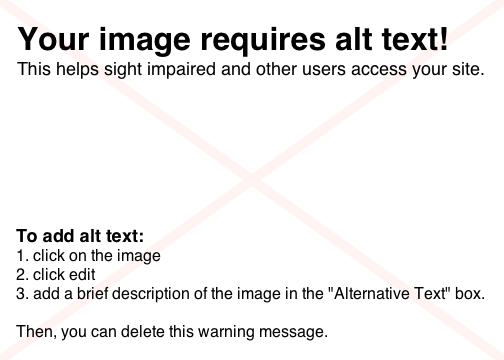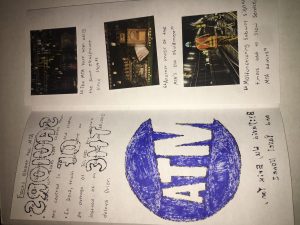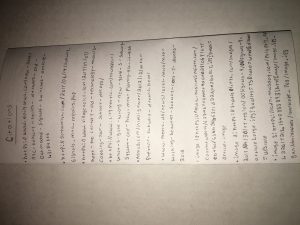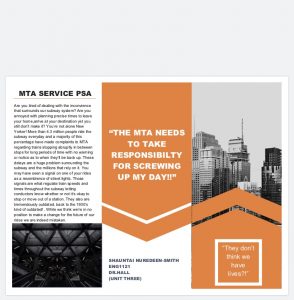Category: Community Problems/ Community Solutions
Final draft unit 3
Final Draft
Dear MTA Board Members,
For starters, I would like to thank you all for what you’re doing for public transportation and allowing there to even be an alternative for people to commute. But it’s honestly not enough. As a train rider, I’m speaking on behalf of myself and other passengers I witness who are also fed up with the MTA when I say that train delays have become major issues. Train delays take place during any time the subways are in service. They last from as short as five minutes to as long as forty five minutes based on my experiences. But I’m pretty sure that others have experienced worse. During service hours when a train all of a sudden stops moving, most people boarding the train start sucking their teeth or shaking their heads right before the conductor states, “we’re experiencing delays due to signal malfunctions, we’ll be moving shortly, thank you for your patience.” Do we really end up moving shortly though? No. Sometimes we do but often times we don’t and that is not okay. There is nothing more disappointing than hearing that the train is delayed when you have somewhere you really need to be. It also annoys some passengers that the MTA never explains what signal failures are, why they go wrong, and things that can be done to avoid them. They just stop the train, give an excuse about signals, and expect passengers to comply with it.
After doing research of my own, I found out that just like roads, railways have signals which are traffic light devices that inform train drivers if it’s safe to proceed. Signals are positioned at the beginning of each track and divided into sections to ensure that trains don’t collide. In a particular section, only one train should be in service. Sometimes these signals breakdown and the signal turns red causing train drivers to stop driving. Signals turn red because of problems with track circuits and axle counters. If anything goes wrong with these devices, its not safe for a train to proceed. And if one train doesn’t proceed, it will hold up the train behind it which will cause train traffic. These devices fail because the proper maintenance that tracks need to function efficiently is not being provided enough. On top of that, recent studies found out that “For all intents and purposes, the subway uses the same signaling system that was installed when the first subway line opened in 1904.” (Gordon 1). So basically, the subway uses the same century old technology, more specifically signaling system which is a key factor as to why trains experience delays. If passengers have to deal with the annoyance of train delays due to signal problems, they should at least know the reasons why these signals fail. The way the system operates hasn’t appropriately changed since it’s establishment. This results in trains being held in stations longer than intended. And if trains don’t proceed on their proper schedules, things could get hectic really quickly. Things such as electrical supply faults, track circuit failures, broken rail joints, blow signal lamps, or train stop faults which are referred to as these signal problems could all be prevented if more track work gets done.
A few suggestions gathered that may help prevent delays include meetings that should be held with railway engineers discussing steps that need to be taken to ensure that proper track maintenance takes place and engineers that actually live within the borough they work for should be the ones being hired. This way they can get to their job destinations quicker and develop solutions to technical problems quicker. New products to enhance track duration should also be open for discussion and development. Rumor has it that the subway fare is going up soon, if this is true people shouldn’t have to pay more for commutes that are twice as long than usual. It’s just simply unfair! Thank you for your time.
Sincerely,
Ife Ajayi
Noise Pollution Health Effects Draft
Latrell Greene
ENG 1121
Dr. Hall
4/4/2019
Noise Pollution Effects on Health
Dear Mayor de Blasio,
Noise pollution being ever-present in big cities, like NYC, can lead to health effects that range from levels of both physical health effects, to psychological. A multitude of studies have been conducted on the effects of noise pollution on the human mind and body, which goes to show how prominent the problem is, so this letter is written to persuade you to consider solutions to get the city to have a more considerate and moderate noise level, especially in our subway system.
New York City is home to a subway system that can expose “commuters to noise as loud as a jet engine”. In an article by The Guardian, author Olga Oksman stated that in Time Square’s busy subway station, the noise levels clocked in at 80 decibels to 96 decibels when express trains pass through the station, and up to a level of 101.9 decibels at Manhattan’s Upper West Side station. A study 2011 study from the German Department of Environmental Health also stated the fact that “Noise from transportation is by far the most widespread source of noise exposure, causing most annoyance and public health concerns.”
Though the subway is arguably the loudest source of noise, it isn’t the only source of noise pollution. Noise pollution is also prevalent in busy streets, and there is often a lot of construction around the city, thus the noise is very spread out in the city. Although the noise wouldn’t be exactly ear-splitting, it can still have an effect internally, on a psychological level, which could connect to problems with blood pressure and heart rate. A study from 1995 by Journal of Hypertension featured conducted research on the effects of urban noise pollution on blood pressure and heart rate in preschool children, and concluded that “the group mean blood pressure and heart rate values of preschool children from quiet areas contrasted with readings for those from noisy environments. This indicates a positive association between the level of traffic noise and a possibly increased role of sympathetic cardiovascular regulatory influence. ”
The effects that noise pollution can have on people according to a 2000 study conducted research on the effects of noise pollution on humans, can have a range including: “Noise Induced Hearing Impairment”, “Stress Related Health Effects”, “Sleep Disturbance” and “Effects on [Cognitive] Performance”.
Possible solutions to the problem could be an effort to update the subway system, as evident by a comparison between our subway system and others, like the bullet train in Japan. Even by taking steps toward it over a period of years would the outcome be significant.
Sources
- https://www.theguardian.com/lifeandstyle/2016/aug/31/new-york-city-subway-trains-noise-pollution-jet-engine
- http://www.noiseandhealth.org/article.asp?issn=1463-1741;year=2011;volume=13;issue=52;spage=201;epage=204;aulast=Babisc
- https://ehp.niehs.nih.gov/cms/attachment/2122895a-7860-45ef-8a1e-c7b2ccb08c1b/ehp.00108s1123.pdf
- https://www.researchgate.net/profile/Valeria_Regecova2/publication/15570548_Effects_of_urban_noise_pollution_on_blood_pressure_and_heart_rate_in_preschool_children/links/5a51575aa6fdcc769001ff4a/Effects-of-urban-noise-pollution-on-blood-pressure-and-heart-rate-in-preschool-children.pdf
Brochure draft
College Rape Date Preventions
Research Memo – Rape Culture in Colleges Prevention
The problem with Rape culture and sexual assault is that it has became a societal Social norm to blame the victim for the assault. According to Campus Safety 43% of the time the Victim is intoxicated, and the perpetrator tends to be intoxicated 69% percent of the time. The problem during a sexual assault the victim will know the perpetrator, in this society the victim will always be doubted about the assault. “You were drunk, you sure you didn’t ask for it?” Or if the victim reports the Incident the Police would question the case because you were drunk and wouldn’t have clear facts to help the case. The problem with Rape culture and Sexual Assaults is that it’s a norm to question the victim and convince the victim to question what really happened that night. On campuses 20 – 25% of women college students are apart of a rape incident or sexual assaults. Thats bout ¼ women being sexually assaulted. We need to be encouraging victim to speak up and help the victims after the incident, instead of just dismissing the case because the victim was drunk and the clothes they were wearing meant they were asking for it. On October 3, 2018 our President mocked and imitated Christine Blasey Ford Testimony during the Ford and Kavanaugh case. He mocked Ford and Stated ““I had one beer. Well, do you think it was — nope, it was one beer. “How did you get home? I don’t remember. How’d you get there? I don’t remember. Where is the place? I don’t remember. How many years ago was it? I don’t know.” Trump concludes his statement with she can remember that she only had one beer that night but nothing else. There is a place and time for everything and during a political rally was not the place to mock Ford, as he was de-valuing all women in the US and setting the social expectation about sexual assaults.
With court cases evaluating cases on “Innocent until proven guilty”; it is difficult to make a case on sexual assault because it is normally based on a He said She said. So what we can do to help our community is to bring awareness to the problem and help victims understand the resources they have. Most college are trying to help by teaching the students the importance of consent but we can always do more. We need to create a community that looks after their peers. notice change in their lifestyle and just simply be there for these victims. Because again about ¼ women have been sexually assaulted or raped and I know for a fact I have more than 4 women in my class. Raped victims tend to feel alone but we need to create a community where there are not alone. Inform victims that they have hotlines to call, that when you go out to drink that you have friends or peers are looking after you and your drink. Society blames the victims but but where are the future and we need to make a change.
For Tuesday– Rough Drafts of Unit Three Due!! (Final Drafts due Thurs!!)
Hey everyone– rough drafts of Unit Three are due on Tuesday. Please post them online (if possible) and bring them to class. Classtime will be used largely for workshopping of these drafts, so if you don’t have one, you’re gonna be sitting around doing nothing. Plus– this is a great opportunity for you to get some feedback!
A reminder: POST RESEARCH MEMOS IF YOU HAVEN’T!
Also: For those of you who did drawings, please remember to redo your artist’s statements. I’ve provided you with links to the info about how to write artists’ statements. Post them online, but also please send me an email to let me know you’ve done so: chall@citytech.cuny.edu.
Noise Pollution
The first article that I read was written by Ben Wellington and it basically talks about various types of noise pollution in New York and who makes them. Also the article is full of charts that show the amount of noise pollution in the city and also the amount of complains so that it is more understandable where all these noises are coming from and by that I mean the places of the city. Also what is interesting about the article is that there is one chart that shows all the calls people make because of the noise and the time they were complaining or just calling 311 to complain. The chart can be used to better show evidence of the problem and how to best solve it so that people stop complaining and everyone can live without being disrupted by noises. The link to this article is: https://www.newyorker.com/tech/annals-of-technology/mapping- new-york-noise-complaints The second article that I took a look at was written by Daniel Scheffler. It talks about some ways of how we can reduce noise pollution and he has a lot of good solution like having sound isolation windows which should be start to be used more in the market the only bad thing about it is that maybe they’ll cost more than a normal window that everyone has in there houseThe link to this article is: https://www.brickunderground.com/improve/turn-your-NYC-
apartment-into-sound-oasis
For Thursday
Please print out, read and annotate the “Maker’s Eye,” which is about revision (below)
Also, keep working on your projects for Unit 3 (Community Projects/ Community Solutions)
As an update, the rough drafts for Unit 3 will be due on April 16. Please make these as finished as possible– FINAL DRAFTS DUE ON APRIL 18.
Also, the revision of the education essay has been postponed until after the break. It is now due on April 30.
Here’s the “Maker’s Eye”
Maker's EyeSo far my group and I have a set a brief outline of what were going to do. We’re going to combine our collaborations together and see what needs to be on the final product. We’re going to try to make it very visual and upfront as possible so the audience could see the issues we’re trying to address.










